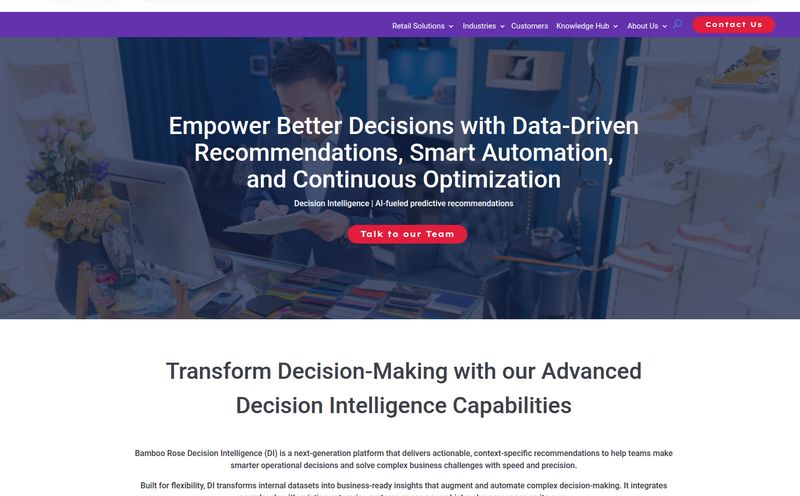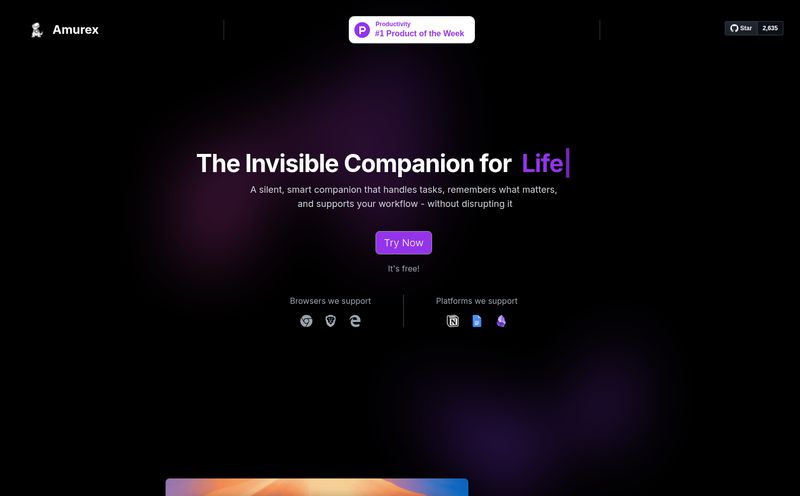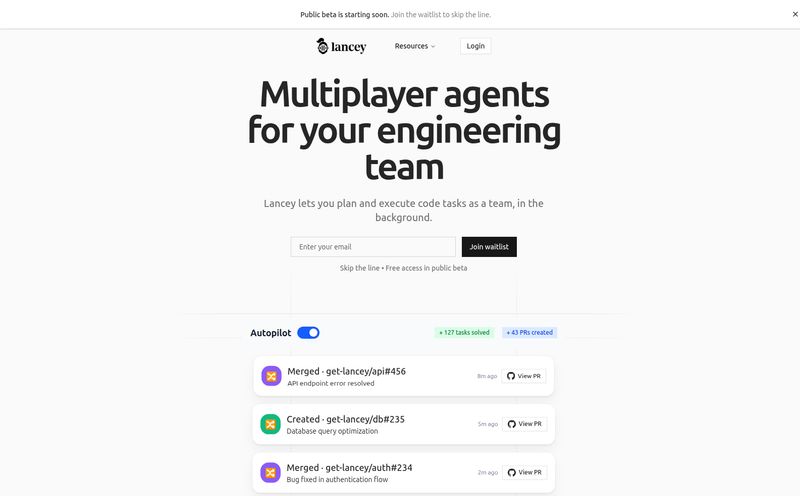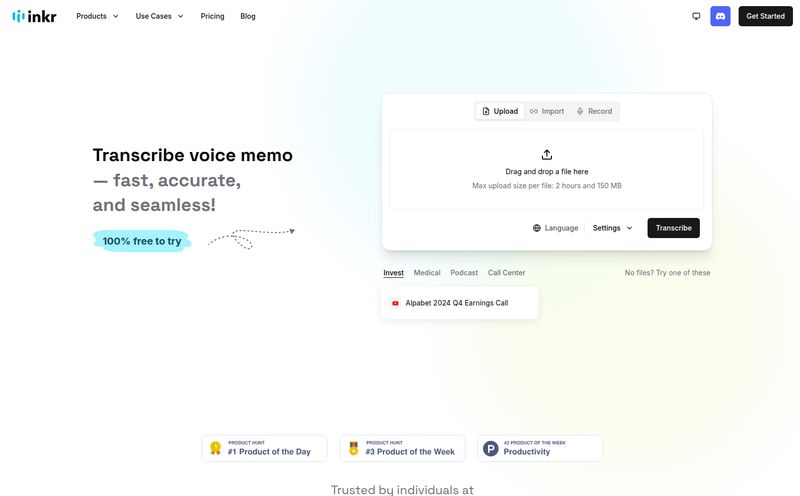If you've spent any time in the world of options trading, you know the daily ritual. The pre-market scan, the hunt for the perfect setup, the constant chart-watching that makes your eyes feel like they're full of sand. It’s a grind. A real, screen-staring, coffee-fueled grind. You’re trying to generate consistent income with strategies like the Wheel, but life has a funny way of getting in the way. A meeting runs long, the kids need picking up, and poof—you miss your entry or exit.
I’ve been there. More times than I care to admit. Which is why, when I first heard about Tiblio, my inner SEO-nerd and my inner trader both perked up. An AI-powered system designed to automate the very strategies that can feel like a full-time job? Color me intrigued. But also, skeptical. We've all seen tools that promise the moon and deliver a pile of rocks. So, I decided to take a proper look under the hood. Is this thing the real deal or just another shiny object?
What Exactly Is Tiblio Anyway?
Alright, let's break it down. At its heart, Tiblio isn't some black-box, get-rich-quick scheme. Thank goodness. Instead, it’s a sophisticated suite of tools built to help you systematically and consistently execute proven options income strategies. We're talking about the bread-and-butter stuff here:
- Selling Cash-Secured Puts: Getting paid to agree to buy a stock you want anyway at a lower price.
- Selling Covered Calls: Generating income from stocks you already own.
- The Wheel Strategy: A beautiful combination of the two, creating a continuous cycle of income. If you're not familiar, it's a fantastic strategy to learn, and there are great resources on sites like Investopedia that explain it.
Tiblio’s whole game is to take the heavy lifting out of this process. It provides the data, the screeners, and for those who want it, the automation to place the trades for you. Think of it less like a magic money printer and more like a hyper-competent, data-driven assistant who never takes a coffee break.
Demystifying the Tiblio Dashboard
So what do you actually get when you sign up? The platform is built around a few core pillars that address the entire trading workflow, from idea to execution and review.
The Planning and Research Phase
Tiblio calls your dashboard a “chessboard, demystified.” I kinda like that. It’s a good metaphor. Trading shouldn't be gambling; it should be a series of strategic moves. Their platform gives you powerful options and stock screeners to find opportunities that fit your specific criteria—not just some generic “hot stock” list. You can build out a personal watchlist and get a feel for the rhythm of the stocks you’re interested in before ever placing a trade. This planning phase is criminally underrated by most new traders, and it's great to see it front and center here.
The All-Important Trade Journal
I will die on this hill: if you are not keeping a trade journal, you are not taking your growth seriously. Tiblio has one built right in. Why does this matter? Because your memory is a liar. You’ll remember your big wins with crystal clarity and conveniently forget the dumb mistake you made on a FOMO trade. A journal keeps you honest. It’s where you document your thesis, your entry, your exit, and most importantly, your reasoning. It turns every trade, win or lose, into a lesson. This feature alone is a huge plus in my book.
Execution and Intelligent Alerts
This is where the platform starts to feel a bit like a superpower. You can set up automatic Profit & Loss alerts tailored to your strategy. This means you don't have to be glued to your screen waiting for a position to hit its profit target or stop loss. The system pings you when it's time to act. It’s about trading with precision and purpose, not anxiety.
The AutoPilot Feature: Set It and… Profit?
Okay, this is the main event. The AutoPilot feature is what most people are here for. The promise is simple and seductive: set your strategy once, and let Tiblio do the work. It will find the trades, place the orders, and manage the positions for you by connecting directly to your brokerage account.
How Does the Automation Work?
It's not voodoo, it's algorithms. You configure your personal version of the Wheel Strategy within Tiblio. You tell it what kinds of stocks you like, your risk tolerance, your desired return, etc. Then, the AutoPilot scans the market in real-time for trades that match your exact plan. When it finds one, it executes. The goal is to remove the two biggest enemies of most traders: emotion and time commitment. It forces discipline by sticking to the plan you created when you were calm and rational, not in the heat of a volatile market.
Who is This Really For?
This is the critical question. I dont think AutoPilot is for the brand-new trader who doesn't understand what a put or call is. That’s a recipe for disaster. It’s for the investor who understands the Wheel Strategy but is maybe a busy professional, a business owner, or a retiree who doesn't want to spend 8 hours a day managing trades. It’s for someone who has the knowledge but lacks the time. The site says it’s designed for accounts from $2k - $500k, but one of their cons mentions it works best in accounts over $25k. This makes perfect sense to me, especially for US traders, to avoid the Pattern Day Trader (PDT) rule and to have enough capital to trade quality stocks.
Breaking Down The Tiblio Pricing
Let's talk money. How much does this AI assistant cost? The pricing structure is actually quite reasonable and tiered logically.
First up is the Explore plan, which is completely free. This isn't some crippled demo, either. It’s designed to let you learn the strategy, get a feel for their educational content, and access their Discord community. I love this. It shows confidence in their product—they’re letting you taste the system before asking for a dime. A++ for this approach.
Next is the Trader plan. This will run you $38 per month if you pay monthly, or $30 per month if you pay annually (that's a saving of $96 a year, for the record). This tier unlocks the real-time data, the powerful screeners, the alerts, and all the core tools you need to do the job manually but with a massive advantage.
Finally, there's the big one: AutoPilot. This is the fully automated experience. It costs $69 per month, or $55 per month if billed annually. Right now, they’re running a 34% off deal, which makes it pretty competitive. This plan includes everything from the Trader tier plus the full automation for puts, calls, and the Wheel.
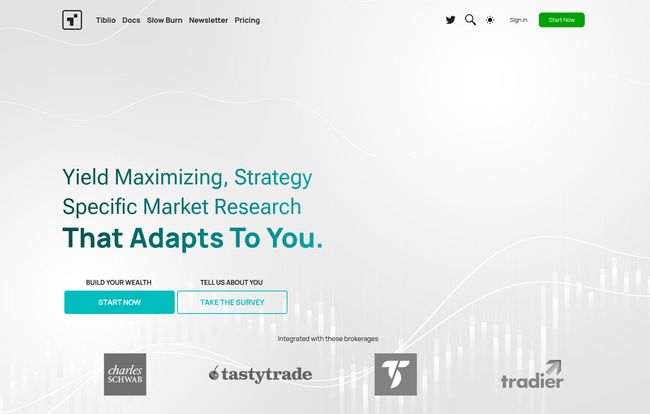
Visit Tiblio
The Good, The Bad, and The Realistic
No tool is perfect. Let's get real about the pros and cons.
What I Genuinely Like About Tiblio
The automation of complex, repetitive strategies is the obvious win. It saves an incredible amount of time and mental energy. I also really value the built-in educational resources and community access. Trading can be a lonely game, and having a community to bounce ideas off of is huge. The direct integration with top brokerages is seamless, and the fact they offer a genuinely useful free trial is a massive sign of good faith.
Some Things to Keep in Mind
This is not a magic wand. You are still trading options, which carries inherent risk. The tool helps you execute a strategy, it doesnt eliminate market risk. You still need a foundational understanding of what you're asking the AI to do. The unofficial recommendation for an account size over $25,000 is also important to consider. While you can use it with less, your results and opportunities will be more limited. And, of course, the age-old disclaimer that every trader needs tattooed on their brain: past results are not indicative of future performance. The market can and will humble you.
My Personal Take: Is Tiblio Worth The Subscription?
So, the million-dollar question. Should you pay for Tiblio? My answer is: it depends entirely on who you are.
For the complete beginner with $500? Honestly, no. Start with their free Explore plan. Use their educational materials, join the Discord, and paper trade until you understand the mechanics of the Wheel inside and out. Don't pay for automation you don't understand.
For the knowledgeable trader who has a full-time job? Absolutely. This is the sweet spot. If you know the strategy, but you simply don't have the bandwidth to execute it perfectly day-in and day-out, the AutoPilot plan could be a game-changer. It's like hiring a disciplined version of yourself to run your trades while you focus on your career or family. The cost is easily justified if it prevents just one or two missed trades or emotional mistakes per month.
Think of it this way: Tiblio isn’t a self-driving car that takes you to a mystery destination. It's more like the world's most advanced cruise control for a car you already know how to drive. You set the speed and the destination; it just handles the tedious parts of the drive for you.
Frequently Asked Questions About Tiblio
- Can I really start using Tiblio for free?
- Yes, absolutely. The 'Explore' plan is $0 and gives you access to their educational sessions and Discord community. It's a great way to get started without any commitment.
- What is the "Wheel Strategy" in simple terms?
- It's a cyclical options strategy where you start by selling a cash-secured put. If the stock drops and you get assigned the shares, you then start selling covered calls against those shares. It's designed to generate continuous income.
- Do I need a huge account to use Tiblio?
- While the AutoPilot feature is designed for accounts from $2k to $500k, the platform's tools and strategies generally perform better with more capital. An account over $25k is often recommended to trade a wider variety of stocks and avoid PDT restrictions in the US.
- Is automated options trading safe?
- The automation itself is safe in that it executes the strategy you define. However, options trading itself carries risk. The market can move against you. The tool automates execution, not guarantees profit. It's crucial to understand the risks before you begin.
- Does Tiblio connect directly to my broker?
- Yes, Tiblio integrates with several top brokerages like tastytrade and Tradier to allow for its automated trading features. You'll need to have an account with options trading approval at a supported broker.
- What if I want to cancel my subscription?
- Based on their website FAQs, you can cancel your subscription at any time. The cancellation will take effect at the end of your current billing cycle, whether that's monthly or yearly.
Final Thoughts on This Trading Co-Pilot
After spending time digging through Tiblio, I'm genuinely impressed. It’s not trying to be something it's not. It’s a purpose-built tool designed to solve a very real problem for a specific type of investor: the time-crunched but knowledgeable options trader. By focusing on planning, disciplined execution, and continuous learning, it provides a framework that can lead to more consistent results.
If you’ve been running the Wheel or selling premium manually and feeling the burnout, Tiblio is absolutely worth a look. Start with the free plan, poke around, and see if it feels right. It just might be the co-pilot you need to make your trading journey a whole lot smoother.
Reference and Sources
- Tiblio Official Website & Pricing: https://tiblio.com/pricing/
- Investopedia - The Wheel Strategy: https://www.investopedia.com/terms/w/wheel-strategy.asp
- FINRA - Pattern Day Trader Rules: https://www.finra.org/investors/insights/pattern-day-trader-rules
